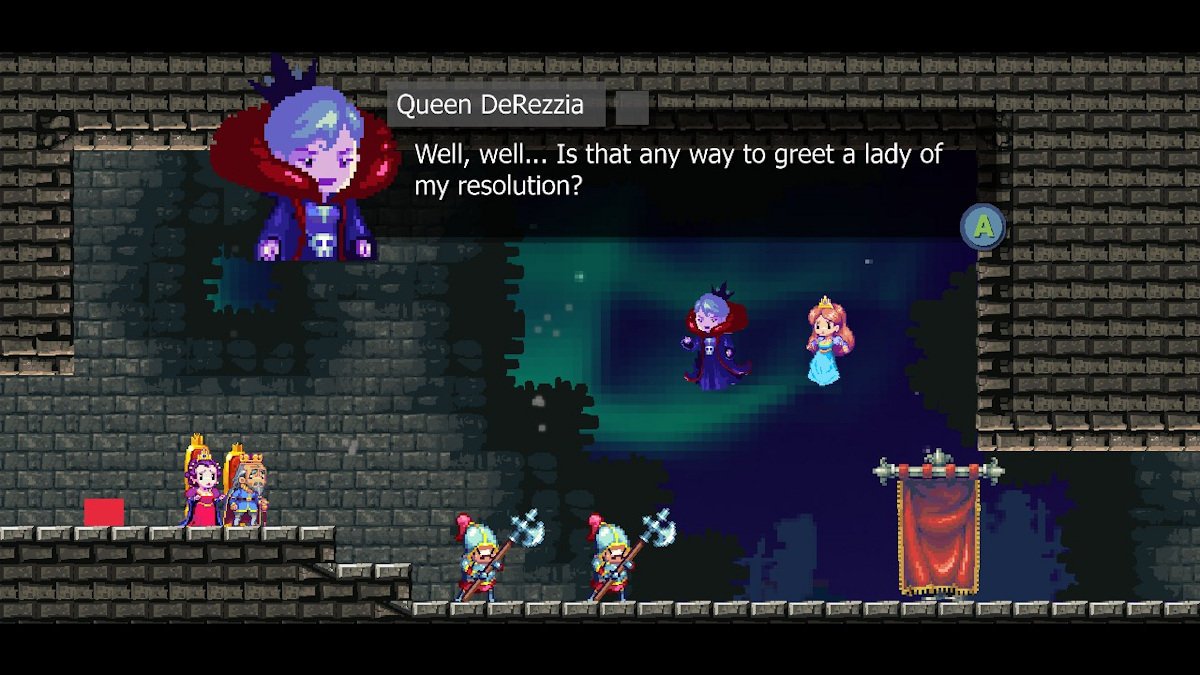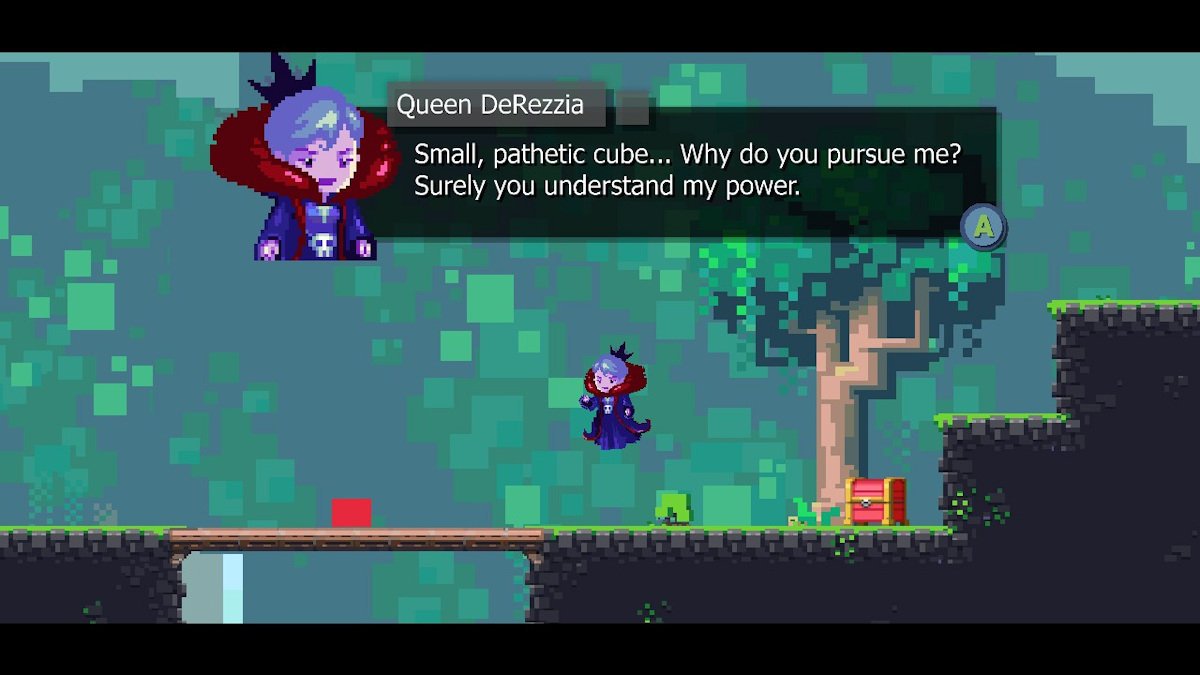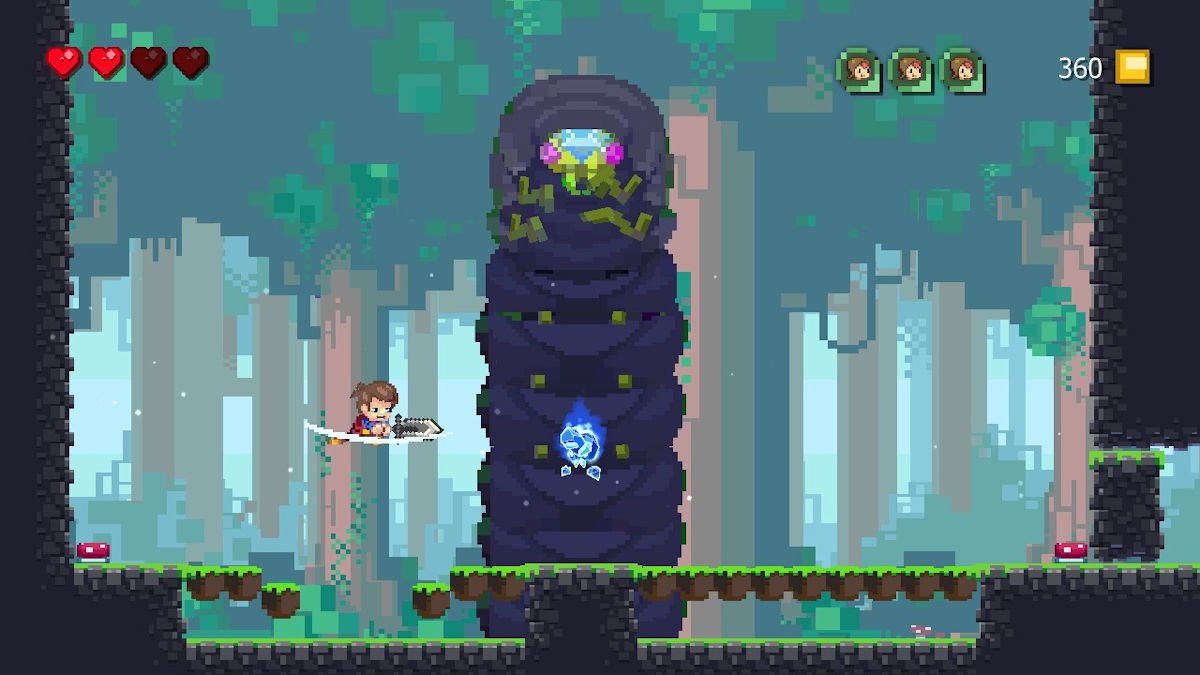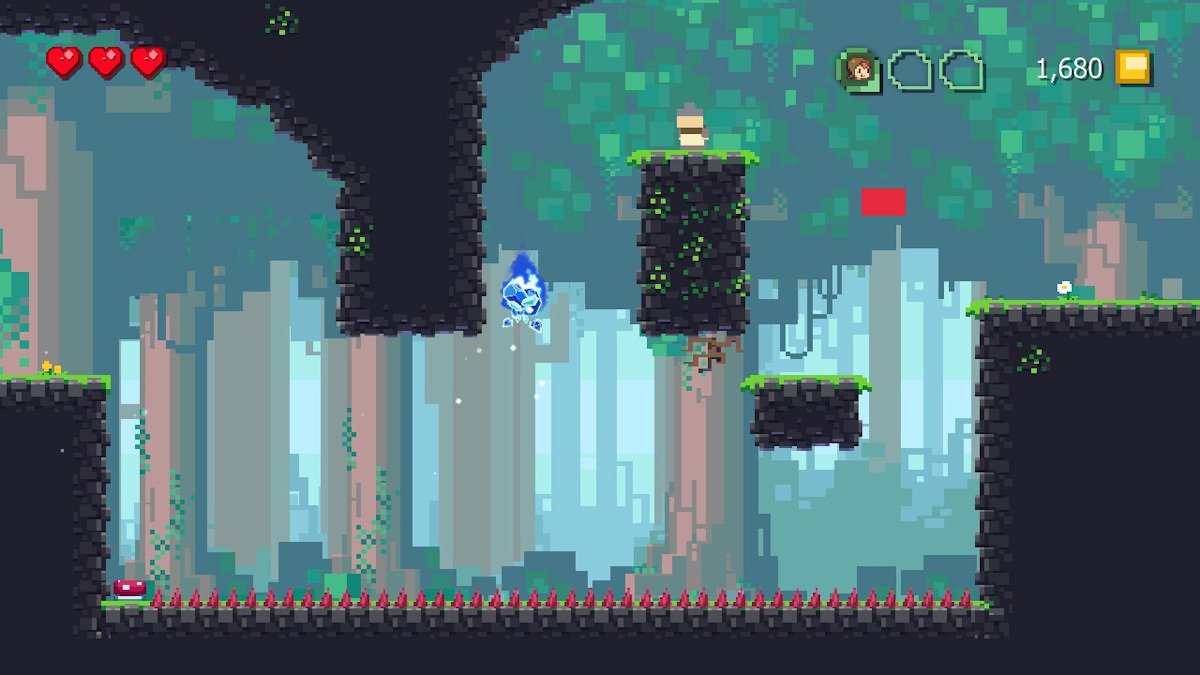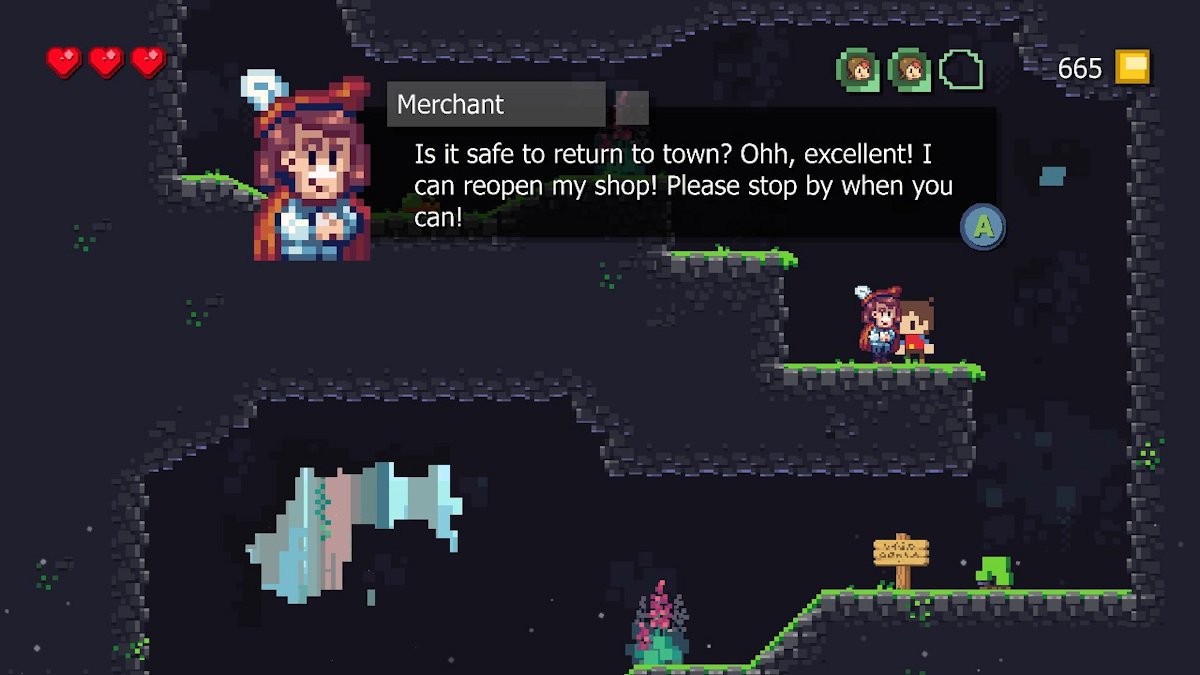Steam Spotlight: 'Adventures of Pip' celebrates 3 eras of platforming games

2D Platformers quickly became the dominant video game genre in the 1980s. A dominance that remained uncontested until Sony shook things up (and actively impeded the release of 2D games) with the original PlayStation later in the nineties. Today, we enjoy a platforming renaissance of sorts, with top-tier platformers like Rogue Legacy, Shovel Knight, and Ori and the Blind Forest all launching in the first half of this year.
A thriving genre means lots of room for different ideas and playstyles. Adventures of Pip from TicToc Games dares to be different by allowing players to switch between 8-bit, 16-bit, and 32-bit forms to defeat enemies and survive obstacles. The fast-paced gameplay and distinctive blend of art styles make for a unique (and mildly nostalgic) experience.
The Steam and Wii U versions of Adventures of Pip have just arrived, with Xbox One and PlayStation 4 versions due sometime soon. Read on for a detailed look at the game (with video) in our latest Steam Spotlight!
Hardware requirements and Steam features
Adventures of Pip requires a Windows desktop or tablet with 2 GB of RAM, so it will run on many Windows 8 tablets. The original Surface Pro can run it quite well at 720p resolution. Initially, I thought the frame rate was a little off, but it turns out that Pixel Pip is just really floaty. His slow jumps take a little getting used to.
The game can be played with keyboard (boo) or controller. On-screen button prompts reflect the Xbox controller buttons, which makes sense since the game is coming to Xbox One soon.
As far as Steam features go, Adventures of Pip supports Steam Achievements at launch and that's about it. Hopefully, Steam Cloud support will come in a future update. Gotta have my cloud saves.
The story of Pip
Pip's small but lovely world lives by a caste system, not unlike some countries in the real world. 32-bit people are the most beautiful, and thus the top of the heap. 16-bit citizens live less luxurious but still comfortable lives. And 8-bit pixelated people have the fewest pixels, making them the lowest of the low – the serfs. Basically, the more pixels you have, the better off you are.
All the latest news, reviews, and guides for Windows and Xbox diehards.
Our hero Pip is the lowest of the low: a simple pixel. Pip starts the game as a doorstop in the royal palace. Soon he is awakened by an attack on the palace. He charges through the castle, hopping on enemies, only to arrive just in time to see the Skeleton Queen DeRezzia accosting the royal family.
DeRezzia has come for Princess Adeline, a girl who can magically create pixels from nothing. The power she draws upon is the Bitstream, the life energy that flows around all of the kingdom's inhabitants. After stealing Adeline's powers, the Skeleton Queen defeats all of the royal guards and turns the poor king and queen into pixels like Pip.
With all of the princess's knights defeated, no one is left to rescue her… None except for Pip, the red pixel who makes up for his small size with plenty of bravery.
Pip fights back
Our hero Pip is actually a bit bigger than a real pixel – a little red block that basically can run and jump. That's enough for him to hop on bad guys to kill them, collecting the yellow pixels they leave behind.
In the first level, Pip meets the ghost of Elwyn, a brave knight who defended the kingdom until his own hubris led to his downfall. Elwyn bestows Pip with a unique gift: the power of the Bit Stream. Suddenly our little red hero transforms from a boxy pixel to a 16-bit boy called Agile Pip!
Pip's Agile form is not only fast, he can also punch enemies and cling onto ledges and jump off of walls. Switching to him greatly increases your mobility. But being larger than a pixel, he also weighs more. When Pip needs to bounce off of spring-like mushrooms to heights above or to ride a monster that won't move if the load is too heavy, he has to devolve back to Pixel Pip. The pixel form can also squeeze through smaller spaces than Agile Pip.
Transforming Pip
In the original Pip gameplay demo we played earlier this year, Pip had to find Elwyn a second time to gain access to his third form: Strong Pip. The actual game introduces the ability more subtly. When Agile Pip kills a glowing blue enemy, he transforms into his Strong form. Likewise, Pixel Pip can jump on a blue enemy to become Agile Pip.
Each advanced form can switch back to previous forms by pressing and holding the Left Trigger or B button. The devolution process also happens to destroy purple blocks that stand in Pip's way.
As a 32-bit character, Strong Pip is bigger and tougher than his previous forms. He can attack with a sword, greatly increasing his offensive capabilities. His strength also lets him push heavy blocks around, which can help him access new pathways and solve puzzles. Strong Pip can't move as fast or jump as well as his lower-pixel counterparts though.
The game takes advantage of each form's strengths and weaknesses, requiring players to switch back and forth between forms to traverse each area. You'll often come across areas where only Agile Pip's ability to bounce off of walls will work to advance, or tight spots that the diminutive Pixel Pip can squeeze through. That said, the big guy doesn't get enough use in the early levels, which is a shame. Eventually they start to make better use of him.
The transformation aspect does have a minor annoyance or two, though. Although Pip can devolve at will, he needs blue enemies to evolve. These enemies must respawn, otherwise players wouldn't always be able to evolve when situations demand it. But there have been times when the blue enemy respawned on top of me as I passed by, causing damage. TicToc should prevent them from respawning on the player.
Jumping on a blue enemy always transforms Tip, which can occasionally lead to unexpected deaths. You might need to be Agile Pip to jump off some walls, and then find yourself accidentally transformed into Strong Pip because you jumped on a baddie. Poor Strong Pip will plummet downward, potentially killing himself. This one's not a design flaw, just something the player has to learn.
Speaking of falling to your death, differentiating between safe downward paths and bottomless pits can be difficult in some platformers. Not in Pip! Here, any pits that will you are marked by floating skull icons. Quite a clever way to let players know which pits can't be traversed safely.
Saving the townfolk
One gameplay aspect that has received a major upgrade since the demo is Adventures of Pip's town and shop system. See, the evil queen has decimated the town surrounding the royal castle and kidnapped is inhabitants. These villagers are scattered throughout the game – three in every level. You'll come across both 8-bit and 16-bit civilians in need of rescue. Once Pip saves a citizen, they go back to the town. As he rescues more people, the town starts to return to its former glory.
The first building to get restored is the merchant's shop. Inside, Pip can spend the pixels he collects from enemies on single-use items and permanent upgrades like an extra heart container. The town and rescue elements tie the whole adventure together, as does the lovely Super Mario World-style world map.
Power to the pixels!
Puzzle platformers can be very rewarding, but their slow pace and possibility of getting stuck on puzzles sometimes cuts into the fun. Adventures of Pip avoids that issue by keeping the puzzles nice and simple. You might get stuck on a tough platforming section now and them, but not knowing how to progress should never be an issue.
Another platforming element that some people get burned out on is retro-style graphics. Adventures of Pip certainly reveres the games of the past, but it doesn't emulate them. This is a game with a distinct look and mechanics that you won't find elsewhere. It's not perfect; the checkpoints are sometimes placed carelessly and some of the UI elements such as text look rough. But Pip's fresh mechanics and art style largely outweigh the kinks.
Windows (and Wii U) gamers, grab Adventures of Pip and enjoy a look at how 2D platformers might have evolved had they not gone away for so long. Let's hope Pip arrives on Xbox One and PlayStation 4 soon as well!
- Adventures of Pip – Windows and Mac – $14.99 – Steam Link

Paul Acevedo was formerly a Games Editor at Windows Central. A lifelong gamer, he has written about videogames for over 15 years and reviewed over 350 games for our site. Follow him on Twitter @PaulRAcevedo. Don’t hate. Appreciate!

